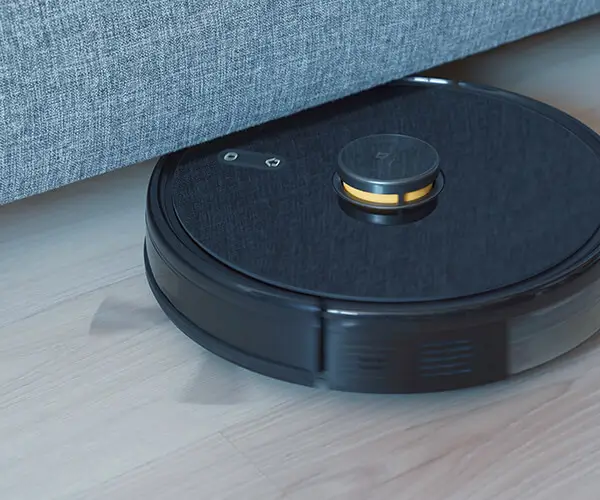Unleashing Creativity with Arduino and Servo Motors: A Beginner’s Guide to Building Dynamic Projects
Imagine a robot arm smoothly reaching out to pick up an object, a camera panning to follow a subject, or a tiny drone adjusting its wings—all these fascinating actions are powered by something as simple yet powerful as a servo motor. Whether you're a budding hobbyist or an experienced engineer, understanding how to control servo motors with Arduino opens a world of possibilities, transforming ideas into tangible, functioning creations.

What Is a Servo Motor, and Why Is It So Popular in DIY Projects? At its core, a servo motor is a type of rotary actuator that allows precise control of angular position. Unlike most standard motors that run continuously, servo motors are designed to rotate to a specific position dictated by an input signal. This makes them ideal for applications requiring accurate positioning—think robotics, camera stabilization, or remote-controlled vehicles.
Servo motors are compact, affordable, and come in various sizes and torque capacities, making them accessible options for hobbyists and professionals alike. They typically operate on a simple control signal—Pulse Width Modulation (PWM)—which encodes the desired position. When paired with an Arduino, a popular microcontroller platform, controlling a servo becomes straightforward, even for beginners.
How Does a Servo Motor Work? Diving a bit into the mechanics, servo motors contain a small motor, a gear train, feedback devices (potentiometers), and a control circuit. When you send a PWM signal to the servo pin, the internal circuitry compares the signal’s pulse width to its feedback, adjusting the motor’s position until it matches the desired angle.
For instance, a 1.5 millisecond pulse corresponds to the neutral (centered) position, while shorter or longer pulses rotate the servo to its minimum or maximum angles, respectively. This cycle repeats every 20 milliseconds, ensuring the servo tracks the position accurately.
Getting Started: What You Need Before jumping into programming, gather your components:
Arduino board (Uno, Mega, Nano—any compatible model) Servo motor (commonly SG90 or MG90S for small projects, or more powerful ones for heavier loads) Jumper wires Breadboard (optional) External power supply (recommended for multiple or high-torque servos) Access to the Arduino IDE (integrated development environment)
Connecting the Servo Motor to Arduino The typical servo has three wires: power (red), ground (black or brown), and signal (white, yellow, or orange). Here's how to connect it:
Power line to Arduino 5V (or external supply if needed) Ground to Arduino GND (or external power supply ground) Signal to a PWM-capable digital pin (like pin 9 or 10)
Writing Your First Arduino Program to Control a Servo Now that everything's connected, it's time to program. The Arduino IDE simplifies this by providing a built-in Servo library, which abstracts much of the complex control code.
Here's a simple example to rotate a servo to 0°, 90°, and 180°:
#include Servo myServo; void setup() { myServo.attach(9); // attaches the servo to digital pin 9 } void loop() { myServo.write(0); // rotate to 0 degrees delay(1000); // wait for a second myServo.write(90); // rotate to 90 degrees delay(1000); // wait for a second myServo.write(180); // rotate to 180 degrees delay(1000); // wait for a second }
Upload this code to your Arduino, and watch your servo motor perform a smooth sweep between positions. This simple project is a stepping stone toward more complex automation and robotics.
Understanding PWM and Servo Control Behind the scenes, servo control relies on PWM signals with specific pulse widths. The Servo.h library manages this, but understanding it helps optimize your designs. Typical pulse widths range from 1 ms to 2 ms, corresponding to 0° to 180°, with 1.5 ms being the center position.
You can manually control the pulse with writeMicroseconds(), offering extra precision. For example:
myServo.writeMicroseconds(1500); // center position
This flexibility is beneficial in projects requiring fine-tuned movements.
Using Multiple Servos Controlling more than one servo involves declaring multiple Servo objects and attaching each to separate pins. This enables complex robotic arms, animated displays, or synchronized movements. Remember that powering multiple servos from the Arduino's 5V pin may cause voltage drops—use an external power supply to ensure stable operation.
Troubleshooting Common Issues
Servo jitter or unresponsiveness often results from insufficient power. Use a dedicated power source if needed. Make sure the servo’s signal wire is connected to a PWM pin. Verify your code and connections if the servo doesn’t move. For high-torque or large servos, check if your power supply can handle the load.
Next Steps: Exploring Advanced Control and Projects Once you're comfortable with simple movements, you can expand your horizon:
Programming variable speed or acceleration Creating synchronized movements for robotic limbs Implementing sensors for responsive control Building robotic cars, drones, or automated camera rigs
In Part 2, I’ll guide you through more advanced programming techniques, integration with sensors, and inspiring project ideas that convert your basic skills into sophisticated creations. Stay tuned—your journey into the world of servo-controlled automation is just beginning!
Kpower has delivered professional drive system solutions to over 500 enterprise clients globally with products covering various fields such as Smart Home Systems, Automatic Electronics, Robotics, Precision Agriculture, Drones, and Industrial Automation.




































